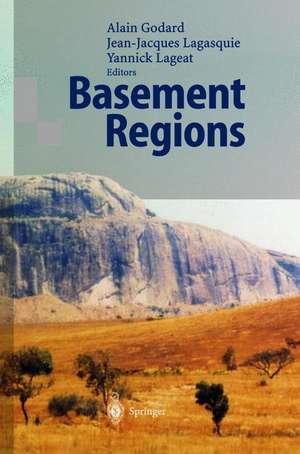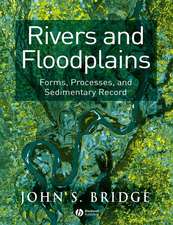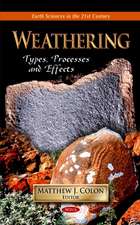Basement Regions
Editat de Alain Godard Traducere de Y. Gunnell Editat de Jean-Jacques Lagasquie, Yannick Lageaten Limba Engleză Hardback – 13 aug 2001
| Toate formatele și edițiile | Preț | Express |
|---|---|---|
| Paperback (1) | 945.79 lei 43-57 zile | |
| Springer Berlin, Heidelberg – 3 oct 2012 | 945.79 lei 43-57 zile | |
| Hardback (1) | 951.91 lei 43-57 zile | |
| Springer Berlin, Heidelberg – 13 aug 2001 | 951.91 lei 43-57 zile |
Preț: 951.91 lei
Preț vechi: 1160.86 lei
-18% Nou
Puncte Express: 1428
Preț estimativ în valută:
182.15€ • 190.66$ • 151.60£
182.15€ • 190.66$ • 151.60£
Carte tipărită la comandă
Livrare economică 31 martie-14 aprilie
Preluare comenzi: 021 569.72.76
Specificații
ISBN-13: 9783540676652
ISBN-10: 3540676651
Pagini: 324
Ilustrații: XI, 306 p.
Dimensiuni: 155 x 235 x 23 mm
Greutate: 0.63 kg
Ediția:2001
Editura: Springer Berlin, Heidelberg
Colecția Springer
Locul publicării:Berlin, Heidelberg, Germany
ISBN-10: 3540676651
Pagini: 324
Ilustrații: XI, 306 p.
Dimensiuni: 155 x 235 x 23 mm
Greutate: 0.63 kg
Ediția:2001
Editura: Springer Berlin, Heidelberg
Colecția Springer
Locul publicării:Berlin, Heidelberg, Germany
Public țintă
ResearchCuprins
I The Fabric of Basement Terrains and its Controls on the Development of Landforms.- 1 Planation Surfaces in Basement Terrains.- 1.1 The Identification and Reconstruction of Planation Surfaces.- 1.1.1 Landscape Geometry through Morphometric Analysis.- 1.1.2 Sedimentary Cover Rocks as Stratigraphic Markers in Denudation Chronologies.- 1.1.3 Superficial Deposits and Basement Margin Sediments.- 1.1.4 In situ Weathering Products and Surface Geochemical Processes.- 1.2 Planation Processes and the Bioclimatic Environment.- 1.2.1 The Preservation of Flat-Lying Land Surfaces: Conditions and Context.- 1.2.2 Formative Processes.- 1.3 Conclusion.- 2 Morphostructural Units, Multi-Storeyed Scenery and the Origin of Escarpments in Basement Terrains.- 2.1 The Morphostructural Fabric and Evolution of Crystalline Basements.- 2.1.1 The Diversity of Morphostructural Units.- 2.1.2 Geological Structure in Crystalline Basements.- 2.2 Multi-Storeyed Landscapes at Passive Margins.- 2.2.1 The Structural Fabric of Basement Terrains.- 2.2.2 Denudation Chronologies at Passive Margins.- 2.2.3 Uplift Mechanisms and Geophysical Implications.- 2.3 The Hercynian Platform of Western Europe: Its Fragmentation and the Origin of Escarpments.- 2.3.1 Landscape Development in the Limousin (France): A Casebook of Geomorphological Controversy.- 2.3.2 The Eternal Dilemma: Neotectonics or Divergent Weathering?.- 2.3.3 Style and Scale of Crustal Deformation.- 2.4 Conclusion.- 3 Structural Landforms in Basement Terrains.- 3.1 Problems of Methodology.- 3.1.1 Differential Erosion and the Problem of Rock Hardness.- 3.1.2 Depths of Denudation and the Geometry of Igneous Intrusions.- 3.2 Etch-Basins and Alveolate Relief.- 3.2.1 Factors of Etch-Basin Development.- 3.2.2 The Age of Etch-Basins and Cauldrons.- 3.3 Residual Bedrock Landforms.- 3.3.1 Residual Landforms and Lithology.- 3.3.2 Residual Landforms and Joint Spacing.- 3.3.3 Tors.- 3.4 Homoclines and Related Strike Valleys.- 3.4.1 Homoclines in Layered Intrusion Complexes.- 3.4.2 The Occurrence of Homoclines in Other Structural Contexts.- 3.5 Conclusion.- II The Weathering of Igneous and Metamorphic Rocks: Processes and Products.- 4 Rock Resistance and its Influence on Landforms in Basement Terrains.- 4.1 The Unequal Resistance of Rock Minerals to Hydrolysis.- 4.1.1 The Susceptibility of Minerals to Chemical Weathering.- 4.1.2 Ranking the Resistance of Minerals: Pitfalls and Limitations.- 4.2 Mineral Species, Petrographic Texture and Rock Resistance.- 4.2.1 The Search for a Chemical Index of Weathering for Crystalline Rocks.- 4.2.2 Difficulties of Interpretation.- 4.3 Rock Fracture, Crystal Cracks, Porosity and Rock Resistance.- 4.3.1 Joint Systems.- 4.3.2 Single-Grain and Multigrain Crack Systems.- 4.4 Conclusion.- 5 Chemical Weathering, Regolith and Climate in Metamorphic and Igneous Terrains.- 5.1 Late- and Post-Magmatic Alteration: Its Products and Significance in Landform Development.- 5.1.1 Identifying the Products of Hydrothermal Alteration.- 5.1.2 The Influence of Hydrothermal Alteration on Landform Development.- 5.2 In situ Saprolite in its Formative Climatic Environment.- 5.2.1 Chemical Weathering in Arctic, Sub-Arctic and Circum-Arctic Environments.- 5.2.2 Weathering in the Temperate Zone.- 5.3 Weathering in Mediterranean and Subtropical Transitional Regions.- 5.3.1 Two Varieties of Weathered Detritus.- 5.3.2 The Problem of Palaeosols.- 5.4 Weathering in Tropical Environments.- 5.4.1 The Debated Origin of Ironstone.- 5.4.2 The Search for Chronological Indicators.- 5.4.3 Different Generations of Weathering, or Different Forms of Weathering?.- 5.5 The Geochemical Approach to Weathering in Geomorphology.- 5.6 Conclusion.- 6 Cryogenic Processes and Ice-Related Restructuring of the Regolith in Metamorphic and Igneous Terrains.- 6.1 Frost Weathering in Crystalline Rocks.- 6.1.1 The Susceptibility of Rock Materials to Frost Weathering: Basic Determining Factors.- 6.1.2 The Characteristics of Frost-Generated Debris.- 6.1.3 The Ranking of Rock Susceptibilities to Frost Riving.- 6.2 Trains of Periglacial Debris across the Slope System: Pattern and Process.- 6.2.1 A Classification of Periglacial Deposits.- 6.3 Type Periglacial Toposequences on Hillslopes of the Mid-Latitudes.- 6.3.1 The Chronostratigraphic Interpretation of Toposequences.- 6.3.2 The Importance of Site-Specific Conditions.- 6.4 Conclusion.- III Zonal Patterns of Landscape Development in Basement Terrains.- 7 Landscape Development in Tropical Shield Environments.- 7.1 The Limited Cutting Power of Streams and its Consequences.- 7.1.1 The Widespread Occurrence of Flat-Lying Topography.- 7.1.2 The Cratonic Régime of Landscape Rejuvenation.- 7.1.3 Multi-Storeyed Topography.- 7.2 Bedrock Landforms: Geological Structure and Denudation in the Tropics.- 7.2.1 Inselbergs and the Inselberg Problem.- 7.2.2 Other Classes of Structural Landforms: A Brief Survey.- 7.2.3 Limits to the Zonal Interpretation of Tropical Landforms.- 7.3 Non-Bedrock Landforms: Slope, Form and Process.- 7.3.1 Wash Divides and Laterite Breakaways.- 7.3.2 Glacis and Pediments.- 7.3.3 Gullying.- 7.4 Conclusion.- 8 Landscape Development in Arctic, Sub-Arctic and Circum-Arctic Shield Environments.- 8.1 Upland Plateaux and U-shaped Valleys.- 8.1.1 Undulating Planation Surfaces.- 8.1.2 Trough-and-Fjell Topography.- 8.1.3 Arctic Coastlines in Crystalline Terrain: The Skjaergård and the Strandflat.- 8.2 The Varying Impact of Past Glaciations on the Landscape.- 8.2.1 Ice-Scoured Landscapes: Cirques, Fjords, Fjells and Geological Structure.- 8.2.2 Debris-Dominated Landscapes: Lowland Till, Upland Blockfields and Relict Saprolite.- 8.3 Timescales and Processes of Slope Development.- 8.3.1 Slopes: Form and Process.- 8.3.2 Rates and Timescales of Slope Evolution.- 8.4 Conclusion.- 9 Landscape Development in Metamorphic and Igneous Terrains of the Mid-Latitudes (with Special Reference to Western Europe).- 9.1 Morphostructural Provinces and Related Scenery.- 9.1.1 Complex Geological Histories.- 9.1.2 A Rich Display of Landforms.- 9.2 The Morphogenetic Legacy of Palaeoclimates.- 9.2.1 The Geography of Weathering Mantles.- 9.2.2 The Zonal Pattern of Periglacial Land Systems in Western Europe.- 9.3 Humans as Geomorphological Agents during the Holocene.- 9.3.1 Slope Reconfiguration in the Upland Environments of Middle Europe: The Impact of Hill Farming.- 9.3.2 Slope Reconfiguration in Steepland Environments: The Impact of Overstocking.- 9.3.3 The Geomorphic Consequences of Rural Depopulation.- 10 Structural Predesign and Scaling Factors in Geomorphology: Lessons from the Study of Basement Terrains.- 10.1 The Scale-Transgressive Influence of Geological Structure.- 10.2 Geological Structure and the Erosional Cycle.- 10.3 Geological Structure and the Slope System.- 10.4 The Belted-Outcrop ‘Palaeoplain’: How Did It Form before It Was ‘Raised’?.- 10.5 The Nature of Geomorphology: A French Viewpoint.- 10.6 Conclusion.- References.
Textul de pe ultima copertă
The basement regions constitute more than two-thirds of outcropping bedrock material across our planet's continents. During the past 30 years French geomorphologists have contributed greatly to the characterization of some of the laws and patterns of landform evolution in shields and crystaliine areas with changing bioclimatic environments. This volume reflects the search for a better understanding of landscapes and landforms in igneous and metamorphic terrains at different latitudes. Furthermore, it covers a wide field of investigation gathered on four continents and addresses the issue at a wide range of spatial and timescales. It is an ideal volume not only for post-graduate geomorphology students but also for geoscience scholars concerned with igneous petrology, quaternary geology, physical geography, soil science and land use planning.











